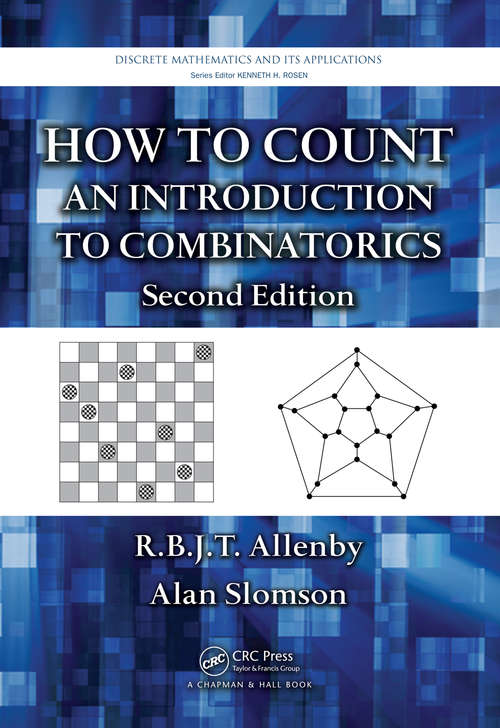How to Count: An Introduction to Combinatorics, Second Edition (2)
By: and
Sign Up Now!
Already a Member? Log In
You must be logged into Bookshare to access this title.
Learn about membership options,
or view our freely available titles.
- Synopsis
- Emphasizes a Problem Solving ApproachA first course in combinatoricsCompletely revised, How to Count: An Introduction to Combinatorics, Second Edition shows how to solve numerous classic and other interesting combinatorial problems. The authors take an easily accessible approach that introduces problems before leading into the theory involved. Although the authors present most of the topics through concrete problems, they also emphasize the importance of proofs in mathematics.New to the Second EditionThis second edition incorporates 50 percent more material. It includes seven new chapters that cover occupancy problems, Stirling and Catalan numbers, graph theory, trees, Dirichlet's pigeonhole principle, Ramsey theory, and rook polynomials. This edition also contains more than 450 exercises. Ideal for both classroom teaching and self-study, this text requires only a modest amount of mathematical background. In an engaging way, it covers many combinatorial tools, such as the inclusion-exclusion principle, generating functions, recurrence relations, and Polya's counting theorem.
- Copyright:
- 2010
Book Details
- Book Quality:
- Publisher Quality
- Book Size:
- 444 Pages
- ISBN-13:
- 9781040063002
- Related ISBNs:
- 9781032919775, 9781420082609, 9781439895153, 9781420082616, 9781138061125, 9780429113123, 9781466501249
- Publisher:
- CRC Press
- Date of Addition:
- 01/30/25
- Copyrighted By:
- Taylor and Francis Group, LLC
- Adult content:
- No
- Language:
- English
- Has Image Descriptions:
- No
- Categories:
- Nonfiction, Computers and Internet, Mathematics and Statistics
- Submitted By:
- Bookshare Staff
- Usage Restrictions:
- This is a copyrighted book.
Reviews
Other Books
- by R.B.J.T. Allenby
- by Alan Slomson
- in Nonfiction
- in Computers and Internet
- in Mathematics and Statistics
